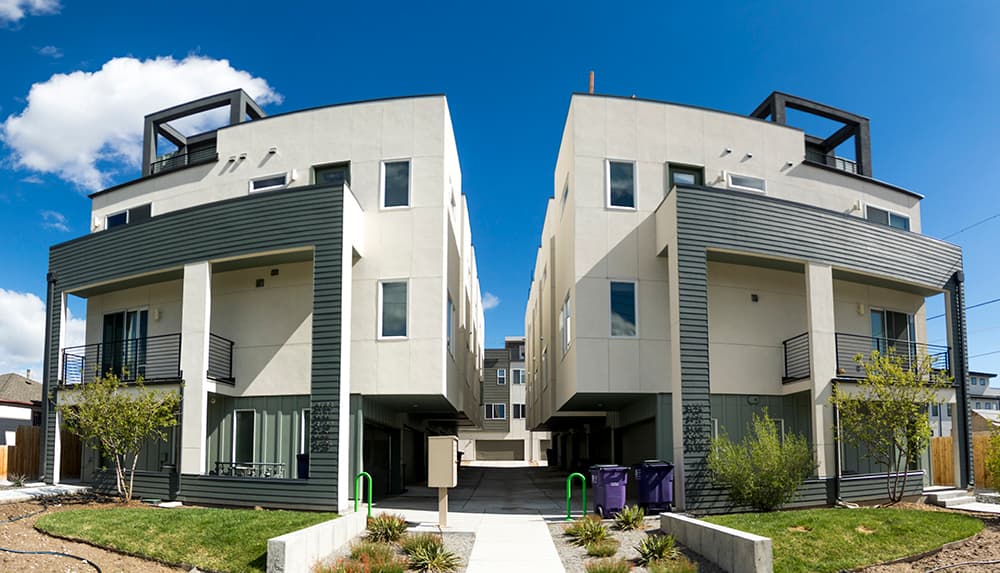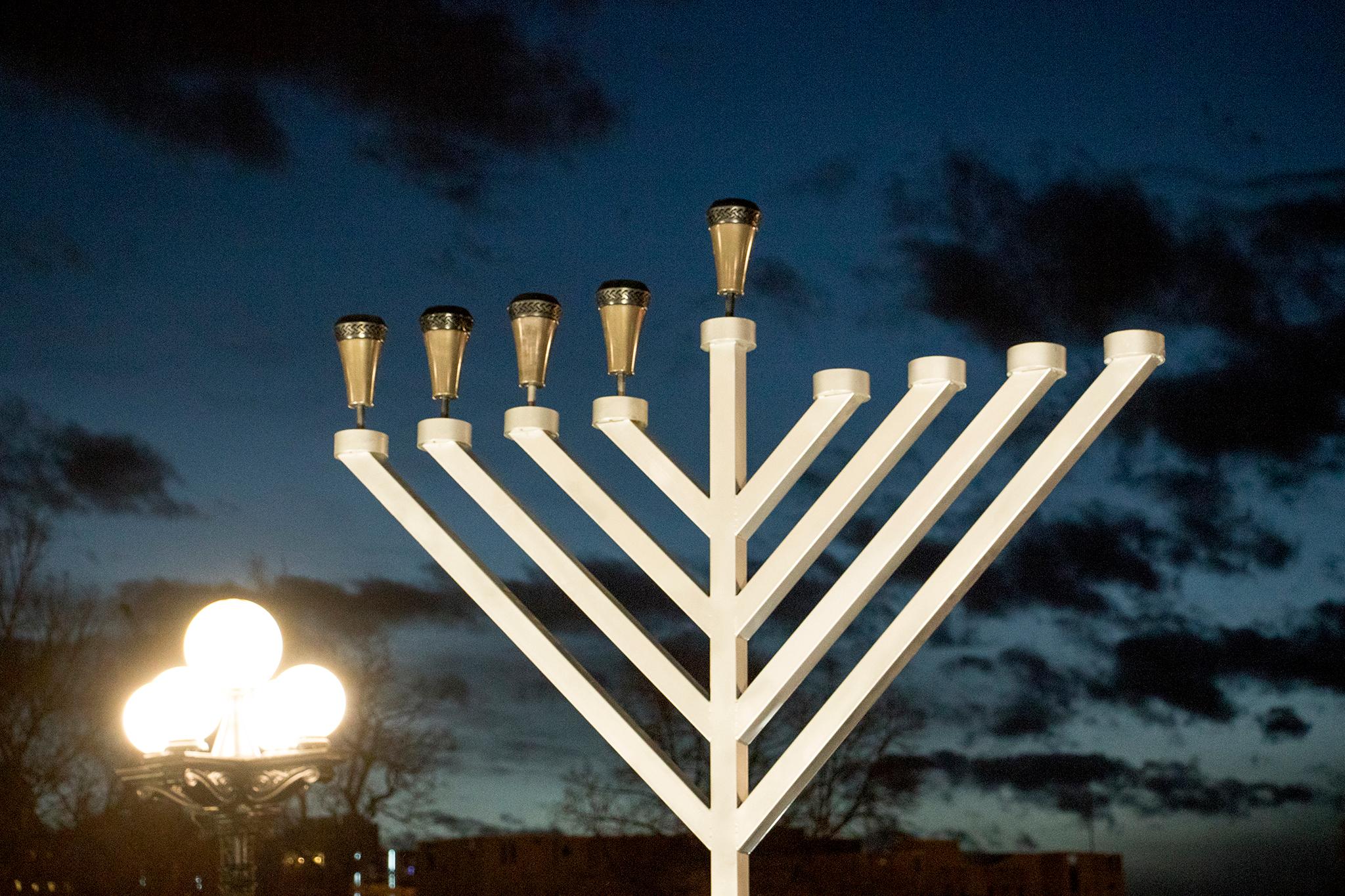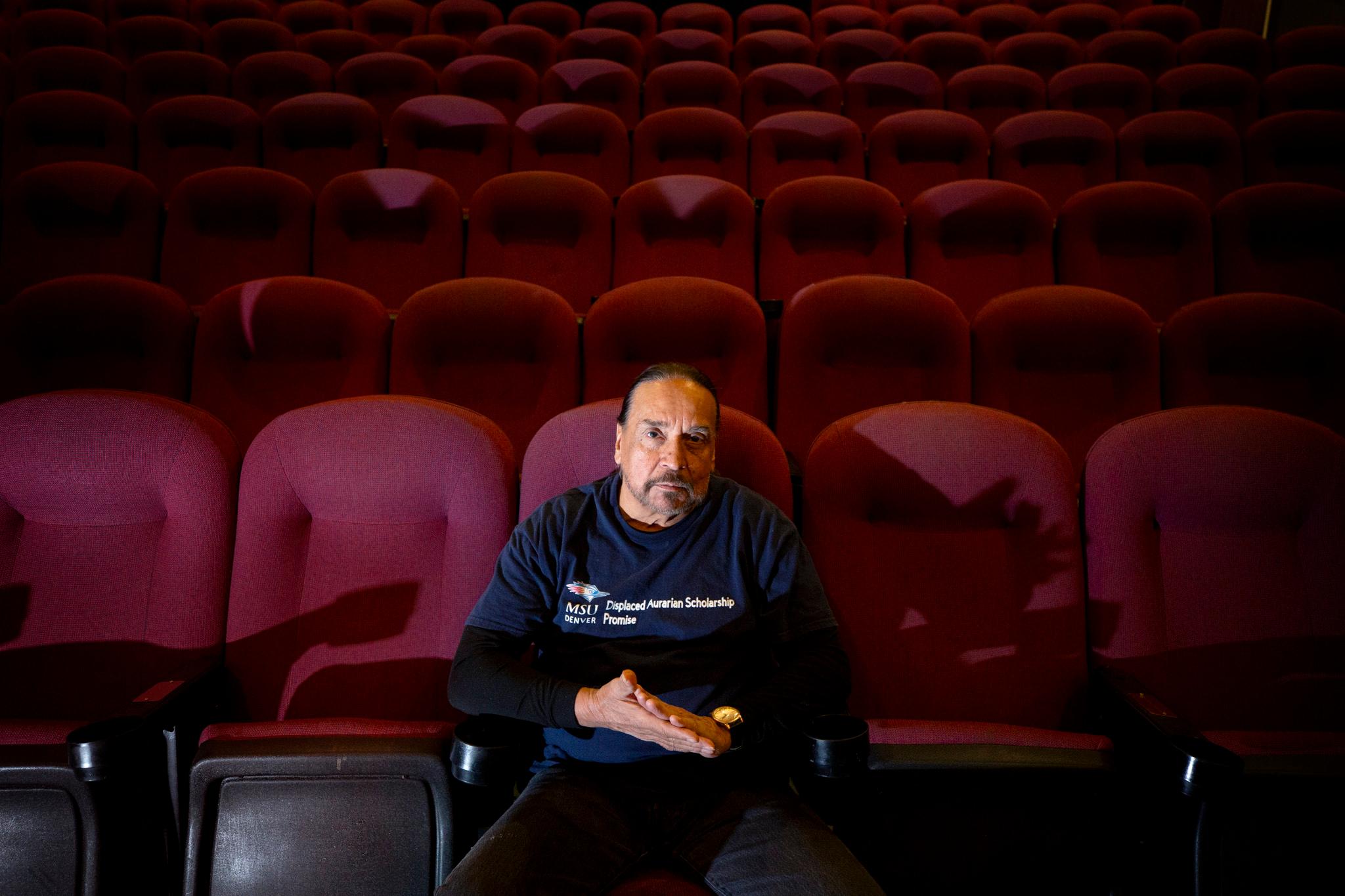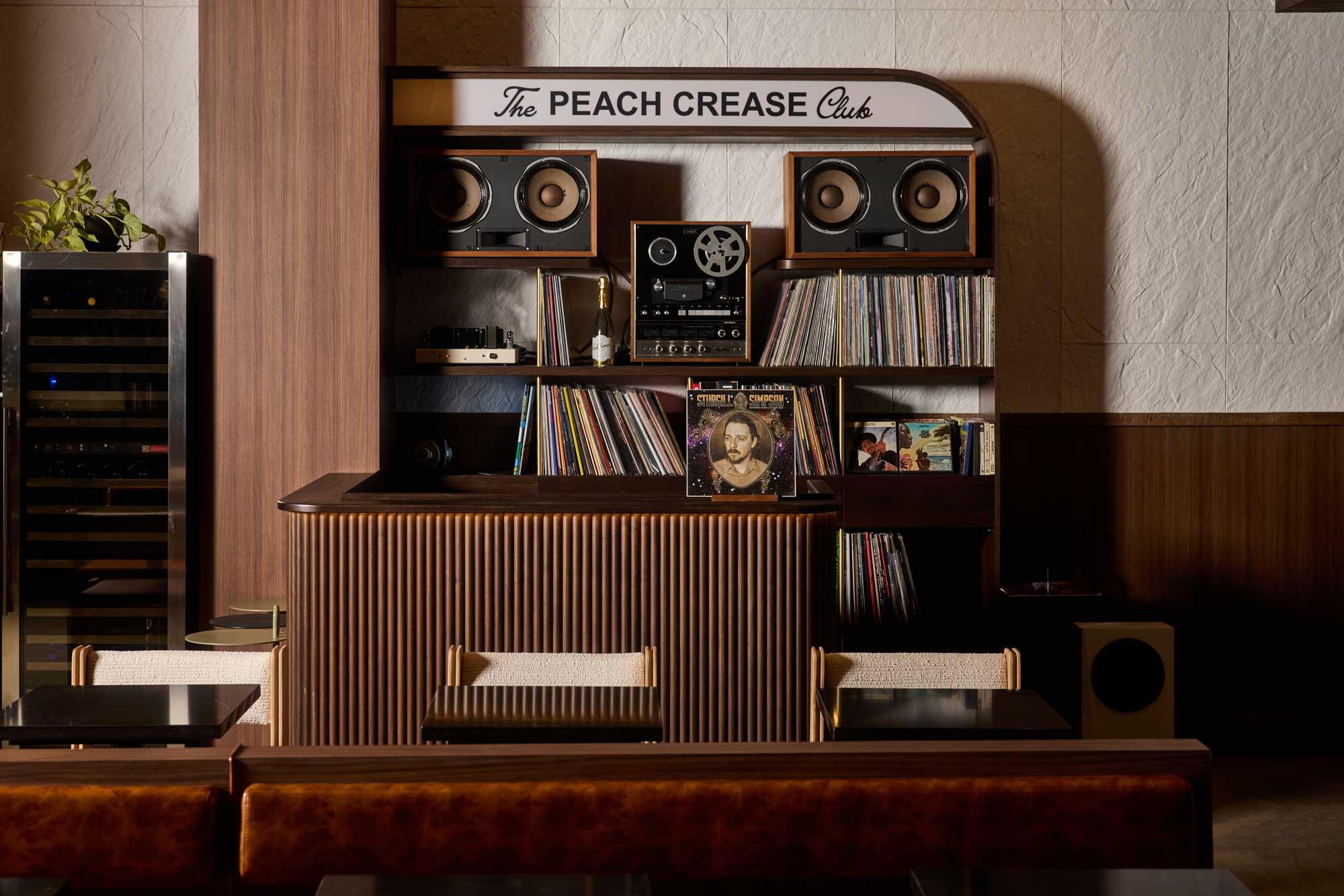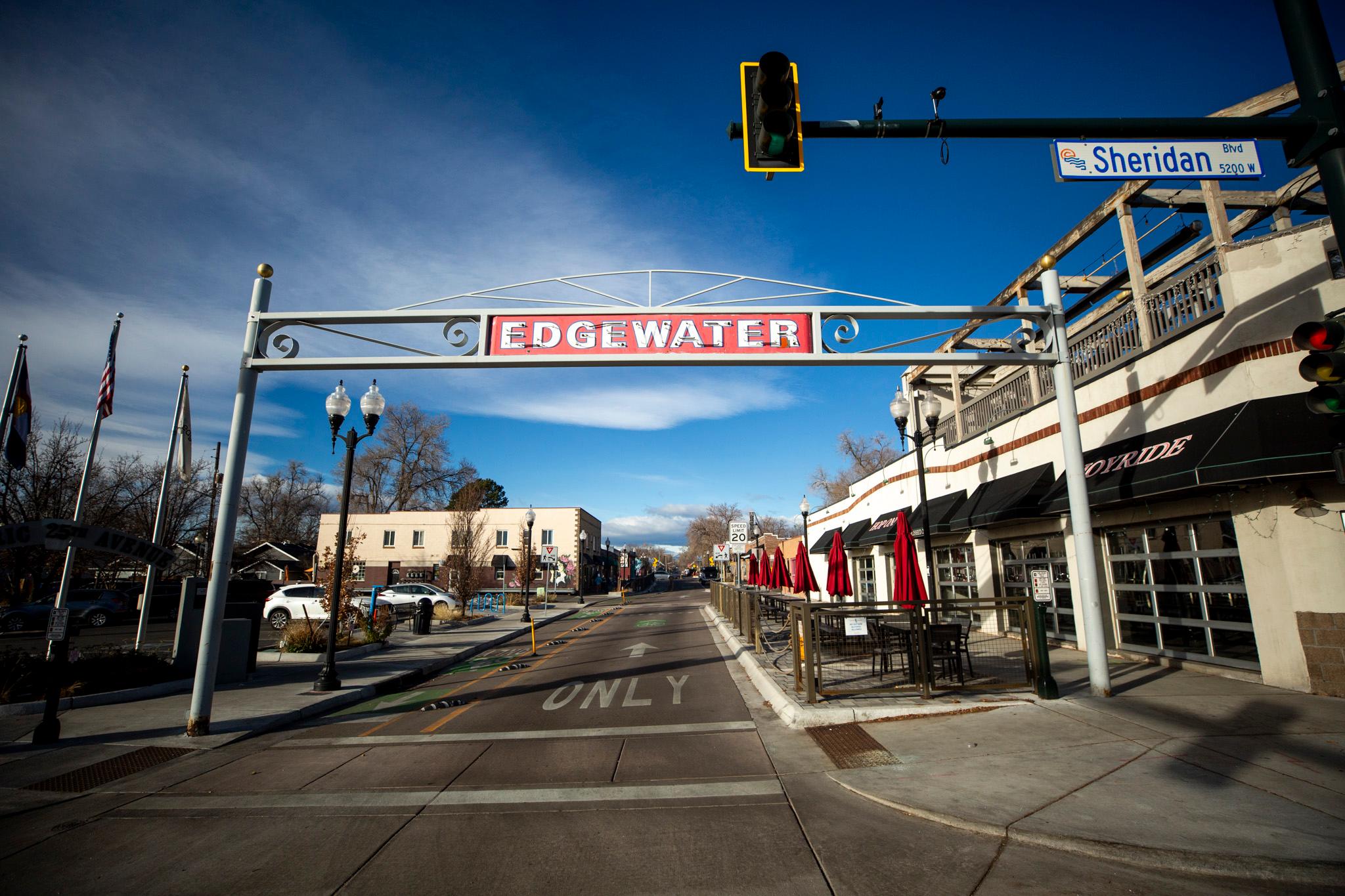Consider the much-maligned slot home.
It may be what stands out about Denver when it comes to architectural style. Longtime Denver realtor Jill Schafer said newcomers she shows around town tell her, "We never see anything like this."
Schafer, who chairs the market trends committee of the Denver Metro Association of Realtors and is a Kentwood Cherry Creek broker, laughs at the idea that Denver style might be defined by such structures, banned by City Council earlier this year after multiplying in northwest Denver. Still, she said, "I don't know of a lot of places that have slot homes."
Brooklyn has its brownstones. Chicago its Frank Lloyd Wright legacy. Instead of something distinct, what's typical of Denver style can be seen elsewhere. The efficient, forthright Denver Square, for example, is known in other cities as a Foursquare.

Denver also has its share of Victorians and mid-century moderns. Often, whatever form is chosen is expressed in one material:
"The tradition of the city is masonry," or brick, said Dick Farley, an architect and urban designer. "If you look at older neighborhoods, you see how much masonry it has."
Farley points to the 1880s, 1890s and 1900s as the decades that set the city's style traditions. Denver was founded following the discovery of gold in the Rockies in 1858. The boomtown's early architecture ran to tents, pine shacks, log cabins. An 1863 blaze that destroyed much of downtown led to ordinances banning flammable building materials.
Stone also became popular and like brick can engage the viewer in subtle ways in the glare of Denver's sunshine.
"Materials that cast shadows, have some texture to them, they make sense here," Farley said.
Renowned Denver architect Temple Buell showed that shadow, texture and brick don't have to be subtle. Among his designs is the Mullen Building on the St. Joseph Hospital campus in Uptown. Buell made the brick undulate like water and contrasted red and light brown colors for the 1930s Art Deco gem that once housed nursing students.
Mary Voelz Chandler, who wrote about art and architecture for the Rocky Mountain News, said fondly that Buell went "crazy with brick."
"Some of his buildings are stunning," Chandler added in an interview.
In her Guide to Denver Architecture published by the Denver Architectural Foundation, Chandler included shout-outs for other influential Denver architects, including Joseph and Louise Marlow, Victor Hornbein and William Muchow. She also said the city owes a great debt to City Beautiful champion Robert Speer, Denver's mayor from 1904 to 1912 who is credited with laying the foundation for parks and parkways to set off some of its best buildings. But in Chandler's opinion, just because Denver has had starchitects and visionaries doesn't mean it has its own style.
"Denver style? There is no such thing, much as people might try to find one," she wrote in her guide. "Yet there are remarkable things about this city."

In the second edition of her guide published in 2013, Chandler expressed concern that what was remarkable would not be preserved, or be drowned out by "a suburban aesthetic, a bland, cheap-material way of doing business that produced projects that are neither urban nor urbane."
How does Chandler feels things have gone since 2013?
Look no further than the title of a blog she started a few months ago: Denver, what the hell happened to you?
In conversation she is more equivocal. She said that if she were to write a third edition of her architecture guide, the tone "would either be very hopeful for the future or somewhat distraught. Maybe both."
She has seen, she said, how much people in Denver, from City Council members to commentators on the Denver FUGLY Facebook group, care about the built environment which "has a huge impact on how we feel, how we behave and how we live our lives."
That impact has been chronicled by CU Denver planning professor Ken Schroeppel working with photographer and architecture lover Mark Zakrzewski.
In Schroeppel's blog DenverUrbanism, they describe, for example, the 1990s. That was when, as Schroeppel writes, Denver "came roaring back from the difficulties of the 1970s and 1980s." It was the era of the pop-top. Homeowners who wanted more space added stucco-on-frame second-floors to their brick or stone homes.
The mixing of materials seems to have become a style. Take a look at what's going up in developments such as Boulevard One in Lowry. Schafer, the realtor, said designers may not be consciously mimicking the pop-top. Instead, she said, they are using just enough expensive stone or brick facing to give a house a sense of solidity, then mixing in cheaper materials to save money.
Style does impact the bottom line.
For a report earlier this year, researchers Jennifer Newcomer and Phyllis Resnick interviewed people working in the housing industry, including developers, and determined that expensive tastes were impacting affordability.
"Preferences for larger homes and premium finishes, or perhaps perception of such on the part of developers, have contributed more to the cost of construction than the general level of inflation in basic building materials," Newcomer and Resnick wrote in "Exploring Colorado's Housing Affordability Challenges in All of Their Complexity."
The researchers conducted an inventory of the base package of finishes -- countertops, flooring, appliances -- offered by builders across Colorado. They found that granite countertops, extensive wood and tile flooring, stainless steel appliances and designer details that were considered upgrades before the great recession "are now considered the new standard. In short, the 'finishes bar' has been raised, and it appears there is no turning back."
Recession and recovery. Bust and boom. In Schroeppel's and Zakrzewski's telling, the cycle has meant developers build as much as they can as quickly as they can when the economy is strong enough to create demand.
What Denver does have is an architectural attitude. Despite Park Hill's more fanciful confections from the past and the current penchant for granite countertops, it's not fussy. While they turned a cold shoulder to passersby, those slot homes were no-nonsense and efficiently maximized expensive land and went up quickly in a city desperate for housing.
"We were a late-blooming city, and so our architectural vernacular is largely borrowed," Schroeppel said in an interview, adding he sees influences from the Midwest, the Northwest, southern California and Texas.
"You might say that the Denver style is the eclectic collections of lots of styles."

